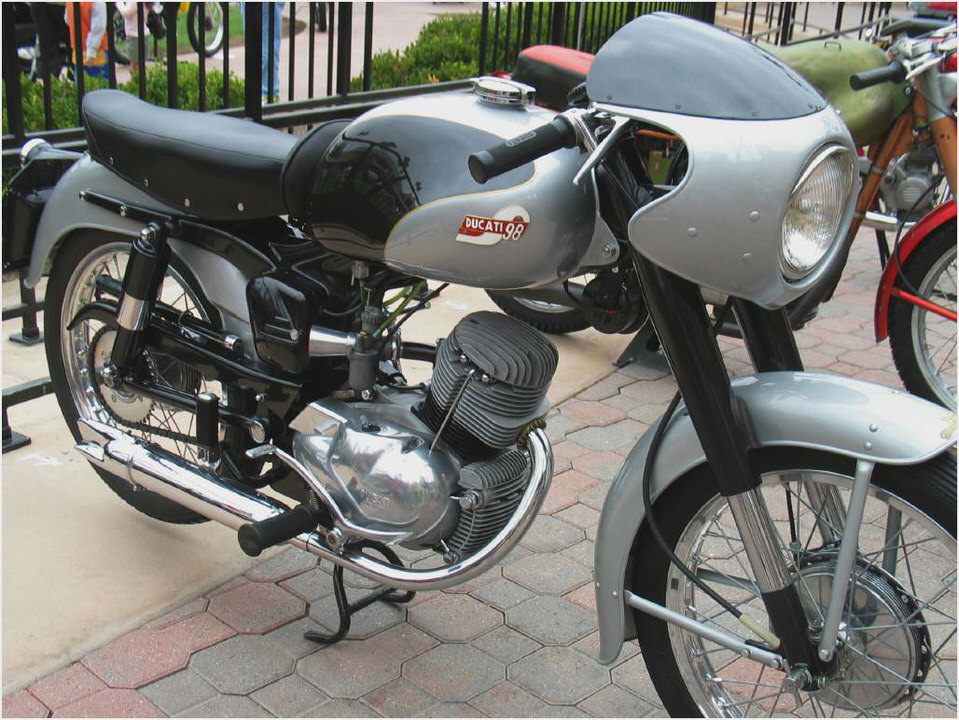
Mamma Mia!
Three obvious but crucial points to ponder about superbikes: 1. They are brutally fast machines, with specific outputs and acceleration figures that (aided by a general lack of governmental regulation) put seven-figure supercars to shame. 2. They only get fiercer, thanks to an arms race fueled by an insatiable desire to claim bragging rights and beat the other guys on the world’s race circuits. 3. Most cost about as much as a Kia Rio.
Ducati, that more-exotic-than-the-next purveyor of two-wheeled tomfoolery, spent two decades incrementally evolving its superbike design and sticking to a trellis frame layout before completely reinventing its 2012 flagship. Dubbed the “Panigale ” after the Bolognese neighborhood where the Italian manufacturer is based, the newest bike addresses its predecessor’s shortcomings with a completely re-imagined design retaining two quintessentially Ducati features: a big twin engine layout, and Desmodromic valves. Though the trellis frame and butt-burning underseat muffler are gone, the signature Ducati exhaust note remains.
The “1199″ designation isn’t entirely honest — its L-twin displaces exactly 1,198.16 cc — but besides the marketing-biased nomenclature, there’s nothing about this bike that isn’t new. The trellis frame has been replaced with a 9.2-pound aluminum monocoque that incorporates an airbox and uses the engine as a stressed member. Mass has been centralized, ie, moved towards the middle of the bike, thanks to a new, underslung exhaust system.
In addition to the smaller muffler, aggressive weight savings throughout include an aluminum fuel tank, lighter wheels and brakes, and re-worked subframes to hold the seats and instrumentation in place. Overall, the Panigale jettisons a substantial 22 pounds, yielding a wet weight of 414 pounds, unfueled.
Off the line, the Panigale feels lithe and slim, with compact proportions that belie its fierce capabilities.
Among other mods, the new mill alters its internal proportions to facilitate its 25 horsepower gain, resulting in a peak figure of 195 hp at 10,750 rpm. Pistons have been widened to a massive 112 mm bore, the largest you’ll find outside the realm of supersized cruisers.
The resulting oversquare ratio is fondly referred to as “Superquadro” by the Italians, and favors high-revving horsepower over midrange torque; though it approaches the bore/stroke figure of a Formula 1 engine, the Panigale still manages a thumping 98 pound-feet of torque, which peaks at a screaming 9,000 rpm. For what it’s worth, Ducati claims the most potent power-to-weight ratio of any production motorcycle.
The Panigale packs no fewer than six electronic control units governing goodies like traction control, throttle response, available ABS, and a clutchless quick-shifter. The settings are negotiated via switchgear on the left handgrip and a contrasty TFT screen befitting a jet fighter cockpit. And yes, there is, of course, a “man mode” that removes all electronic wizardry and allows free reign over those 195 horses and stellar brakes.
The “S” model adds an electronically managed suspension system that adjusts rebound and compression settings from the cockpit; ABS is optional on the base and “S” models, and adds 5.5 pounds to the overall package.
When first straddling the Ducati 1199 Panigale in the paddock of the Yas Marina Formula 1 circuit in Abu Dhabi, two things become immediately apparent: Even here at a race track, I’ll be in no danger of fully exploiting this bike’s vast reserves of performance, and I won’t be fiddling with “man mode.” I’ll lean on those electronic aids while learning this track’s 21 turns.
Off the line, the Panigale feels lithe and slim, with compact proportions that belie its fierce capabilities. Shockingly, it’s also significantly more comfortable than the bike it replaces, thanks to a saddle that’s been moved closer to the handlebars, which are now wider and taller.
The upright eyelines feel more accommodating than the taxing, nearly horizontal back posture induced by its predecessor, and the new positioning inspires greater confidence before the wheel has rolled forward an inch. Twist the throttle, release the clutch, and ease ahead, and the Panigale’s meaty powerband pours to the rear wheel, even though some midrange twist has been sacrificed for high-end oomph.

- Keihin FCR FAQ
- Ducati Diavel Review by WIlliam Will’s Life – Blog
- — 2006 Sport 1100 – Speed Freak’s
- First Look at the New Ducati Diavel: Video – Bloomberg
- 2014 Ducati 899 Panigale review – Road Tests: First Rides – Visordown

